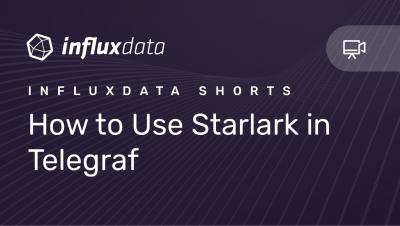Operations | Monitoring | ITSM | DevOps | Cloud
July 2020
Community Highlight: How InfluxDB Enables IoT Monitoring of Gas Station Tanks
I recently spoke with Alex Skrivseth, the Operations Manager at The Shed App, and discovered how he’s using InfluxDB to monitor the current levels of gas and diesel at various gas stations. Simply by extracting IoT sensor data, he has been able to provide valuable previously inaccessible data to fuel truck drivers.
How Playtech Fixed Metrics Over-Collection with Observability
According to Forbes, 2.5 quintillion bytes of data are created every day. Data volumes have grown exponentially in recent years due to the growth of the Internet of Things (IoT) and sensors. The majority of data collected has been collected in the last two years alone. For example, the U.S. generates over 2.5 million gigabytes of Internet data every minute, and over half of the world’s online traffic comes from mobile devices.
InfluxDB Cloud Now on All Major Cloud Platforms: Azure, AWS and Google
Today, InfluxDB Cloud is generally available on Microsoft Azure. Now you have the freedom to run the leading time series database on whichever you prefer: Microsoft Azure, Google Cloud or AWS.
InfluxDB Cloud extends to Microsoft Azure Cloud - now available on all major cloud platforms
SAN FRANCISCO — July 22, 2020 — InfluxData, creator of the time series database InfluxDB, today announced that InfluxDB Cloud is now available on Microsoft Azure, furthering the company’s commitment to increase accessibility to developers. With this announcement, InfluxDB Cloud is now live on all three major cloud platforms — Microsoft Azure, Google Cloud and Amazon Web Services.
InfluxDB Endpoint Security State Template
Our team recently discovered an exposed endpoint without authentication enabled, though we know it had previously been required. The root cause was a missing configuration as a result of a recent upgrade a few weeks earlier, and was easy to fix by simply enabling the configuration parameter correctly. We needed a way to catch this type of issue quickly going forward, for this and for other public endpoints, which should be secure by default. Here is how we solved it.
How to Build Grafana Dashboards with InfluxDB, Flux and InfluxQL
We’re excited about today’s release of Grafana 7.1, which extends Grafana’s built-in InfluxDB datasource to run queries in both the Flux language and InfluxQL. This means it’s super easy to connect Grafana to InfluxDB — whether you use InfluxDB 1.8 or 2.0, Flux or InfluxQL. Because this InfluxDB datasource is built into Grafana 7.1, there is no separate plugin to download and install.
BIRCH for Anomaly Detection with InfluxDB
In this tutorial, we’ll use the BIRCH (balanced iterative reducing and clustering using hierarchies) algorithm from scikit-learn with the ADTK (Anomaly Detection Tool Kit) package to detect anomalous CPU behavior. We’ll use the InfluxDB 2.0 Python Client to query our data in InfluxDB 2.0 and return it as a Pandas DataFrame. This tutorial assumes that you have InfluxDB and Telegraf installed and configured on your local machine to gather CPU stats.
Anomaly Detection with Median Absolute Deviation
When you want to spot hosts, applications, containers, plant equipment, or sensors that are behaving differently from others, you can use the Median Absolute Deviation (MAD) algorithm to identify when a time series is “deviating from the pack”. In this tutorial, we’ll identify anomalous hosts using mad() — the Flux implementation of MAD — from a Third Party Flux Package called anaisdg/anomalydetection.
WayKonect Uses InfluxDB to Improve Fleet Management
The fleet management industry has been quick to embrace technology. They want to understand the current state of vehicles and drivers to improve operations and safety. Data privacy laws are especially important as fleet managers expand their reach into new territories. WayKonnect is using InfluxDB Enterprise to improve the fleet management industry.
Community Highlight: How Supralog Built an Online Incremental Machine Learning Pipeline with InfluxDB OSS for Capacity Planning
This article was written by Gregory Scafarto, Data Scientist intern at Supralog, in collaboration with InfluxData’s DevRel Anais Dotis-Georgiou. At InfluxData, we pride ourselves on our awesome InfluxDB Community. We’re grateful for all of your contributions and feedback. Whether it’s Telegraf plugins, community templates, awesome InfluxDB projects, or Third Party Flux Packages, your contributions continue to both impress and humble us.



